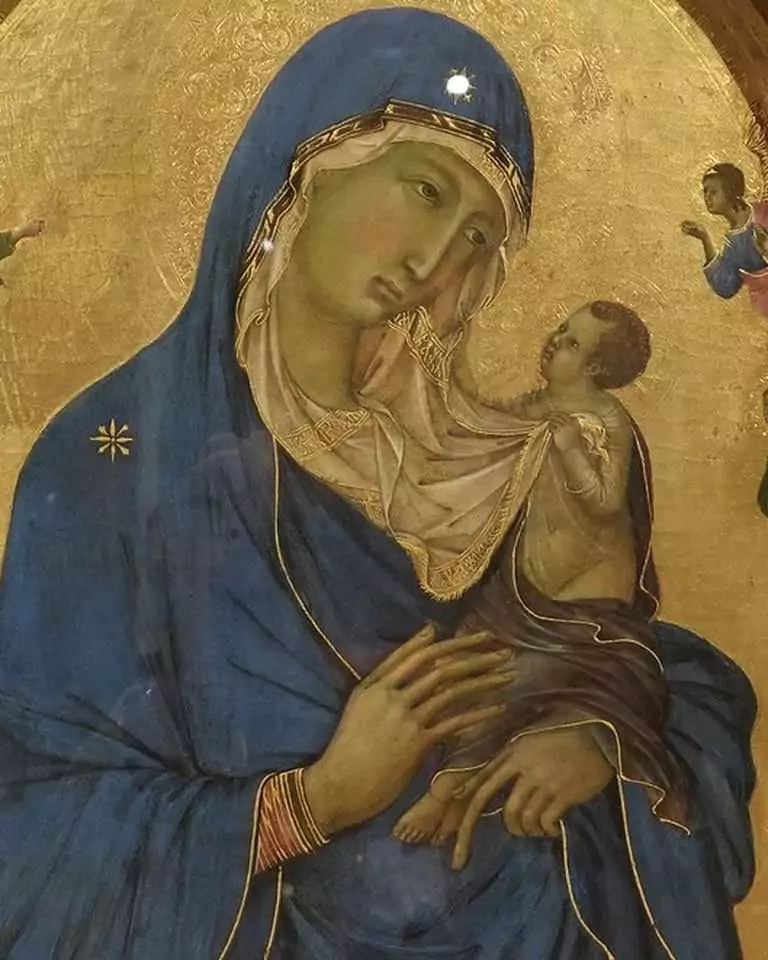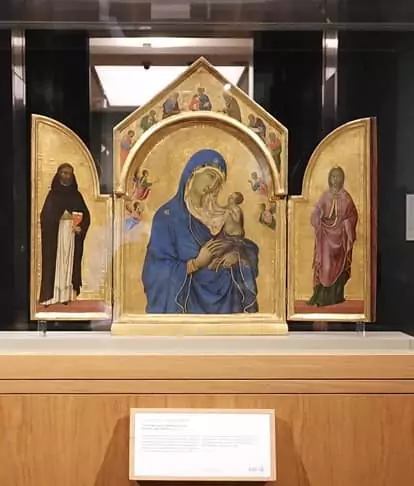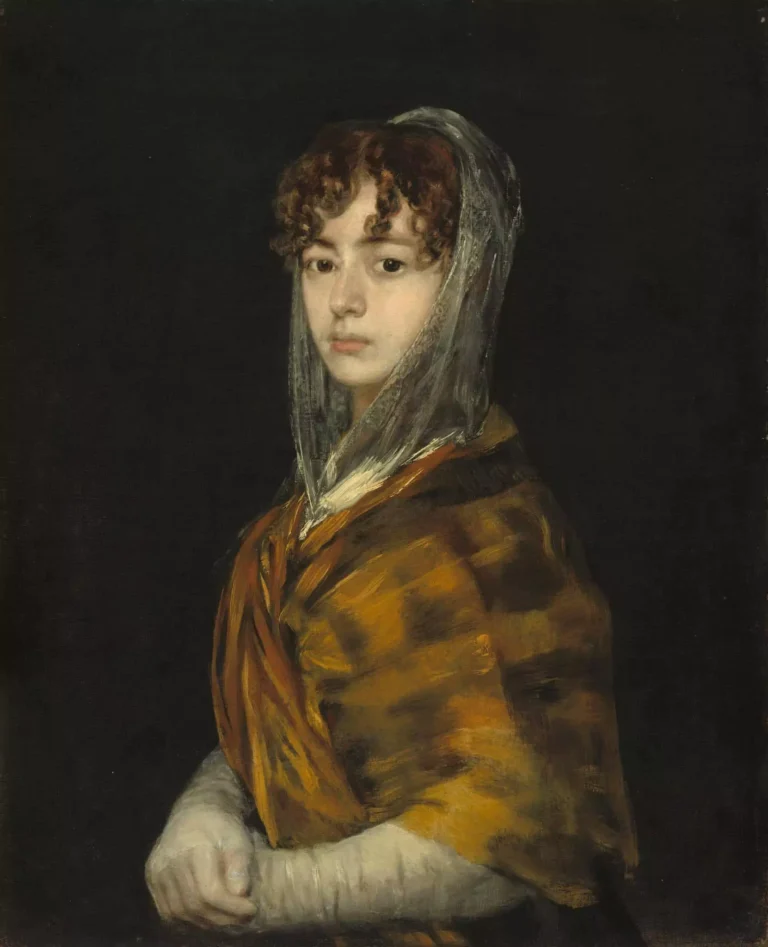Looking for a muse? Check no further. Discover the Best of Art, Culture, History & Beyond!

Technical Details
- Title: The Virgin and Child with Saints Dominic and Aurea, and Patriarchs and Prophets
- Artist: Duccio di Buoninsegna
- Date: c. 1312–1315
- Medium: Egg tempera on wood
- Dimensions:
- Central panel: 61.4 × 39.3 cm
- Left wing (Saint Dominic): 45.2 × 19.3 cm
- Right wing (Saint Aurea): 45.2 × 20.6 cm
- Current Location: National Gallery, London (NG 566)
Among the revered works of the Sienese master Duccio di Buoninsegna, The Virgin and Child with Saints Dominic and Aurea stands as an exquisite triptych that blends religious iconography, intricate craftsmanship, and a profound sense of devotion. Painted between c. 1312–1315, this masterpiece encapsulates Duccio’s refined technique, delicate figures, and the luminous spirituality that defines his later works.

A Triptych of Spiritual Elegance
Housed in the National Gallery, London, this triptych consists of a central panel depicting the Virgin Mary tenderly holding the Christ Child, flanked by Saint Dominic on the left and Saint Aurea on the right. Above them, a gable contains prophets and patriarchs holding scrolls, referencing Old Testament prophecies about Christ.
The Virgin’s deep blue cloak, adorned with a gold star and intricate Kufic-style pseudo-script, evokes celestial grandeur. The Christ Child, draped in a transparent shift under a regal gold-edged purple cloak, clutches Mary’s veil, creating an intimate, humanizing moment. On either side, adoring angels and incense-bearing figures enrich the celestial ambiance.
Saints, Symbolism, and Patronage
The choice of Saint Dominic and Saint Aurea in this composition suggests a Dominican patron. Saint Dominic (d. 1221), founder of the Dominican Order, holds a book—a reference to the Order’s dedication to study and preaching. His presence, along with the triptych’s possible ties to Dominican Cardinal Niccolò degli Albertini da Prato, further emphasizes its probable Dominican origins.
Saint Aurea, a less commonly depicted virgin martyr, was the patron saint of Ostia, near Rome. Her appearance alongside Saint Dominic is significant, as Niccolò da Prato, who was Cardinal Bishop of Ostia, may have commissioned this work. His personal cardinal’s seal featured Saints Dominic and Aurea, reinforcing this theory.
Duccio’s Artistic Mastery
This triptych reflects Duccio’s characteristic soft, lyrical figures, delicate modeling of drapery, and expressive interactions between characters. The use of egg tempera on wood—a medium requiring meticulous layering—produces a vibrant yet controlled luminosity. The finely tooled gold background, an element typical of Sienese panel painting, enhances the sacred presence of the figures.
Notably, Duccio departs from rigid Byzantine conventions, favoring a more naturalistic interaction between figures. The Virgin and Child’s gentle exchange of gazes exudes warmth and intimacy, prefiguring elements found in later Trecento and Quattrocento masterpieces.
An Object of Devotion and Private Worship
Unlike Duccio’s monumental Maestà in Siena, this triptych was likely intended for private devotion rather than public display. The hinged wings allowed it to be folded and transported, suggesting its use as a portable altarpiece for personal prayer.
Given its refined execution, prestigious patronage, and theological depth, The Virgin and Child with Saints Dominic and Aurea remains a testament to early 14th-century Sienese artistry and the intricate relationship between art, faith, and patronage in medieval Italy.

This article is published on ArtAddict Galleria, where we explore the intersections of art, history, and culture. Stay tuned for more insights and discoveries!



